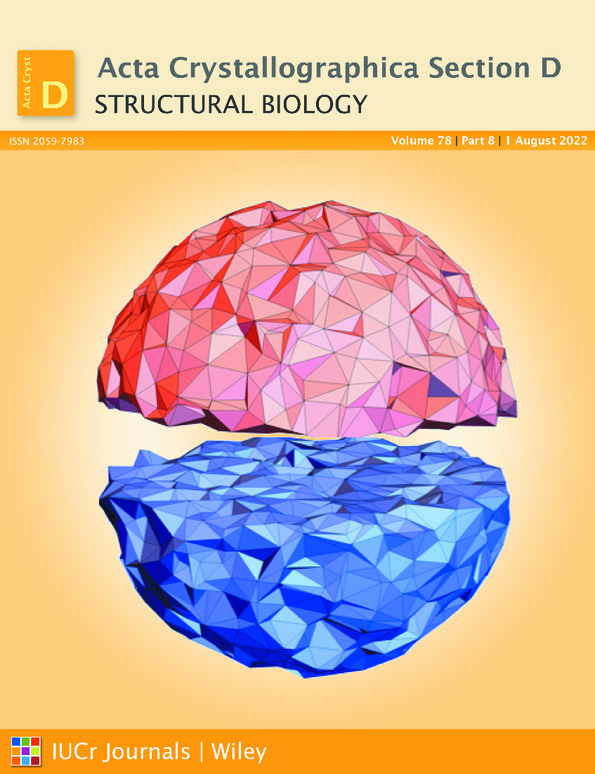Data collection from crystals grown in microfluidic droplets
Abstract
Protein crystals grown in microfluidic droplets have been shown to be an effective and robust platform for storage, transport and serial crystallography data collection with a minimal impact on diffraction quality. Single macromolecular microcrystals grown in nanolitre-sized droplets allow the very efficient use of protein samples and can produce large quantities of high-quality samples for data collection. However, there are challenges not only in growing crystals in microfluidic droplets, but also in delivering the droplets into X-ray beams, including the physical arrangement, beamline and timing constraints and ease of use. Here, the crystallization of two human gut microbial hydrolases in microfluidic droplets is described: a sample-transport and data-collection approach that is inexpensive, is convenient, requires small amounts of protein and is forgiving. It is shown that crystals can be grown in 50–500 pl droplets when the crystallization conditions are compatible with the droplet environment. Local and remote data-collection methods are described and it is shown that crystals grown in microfluidics droplets and housed as an emulsion in an Eppendorf tube can be shipped from the US to the UK using a FedEx envelope, and data can be collected successfully. Details of how crystals were delivered to the X-ray beam by depositing an emulsion of droplets onto a silicon fixed-target serial device are provided. After three months of storage at 4°C, the crystals endured and diffracted well, showing only a slight decrease in diffracting power, demonstrating a suitable way to grow crystals, and to store and collect the droplets with crystals for data collection. This sample-delivery and data-collection strategy allows crystal droplets to be shipped and set aside until beamtime is available.




